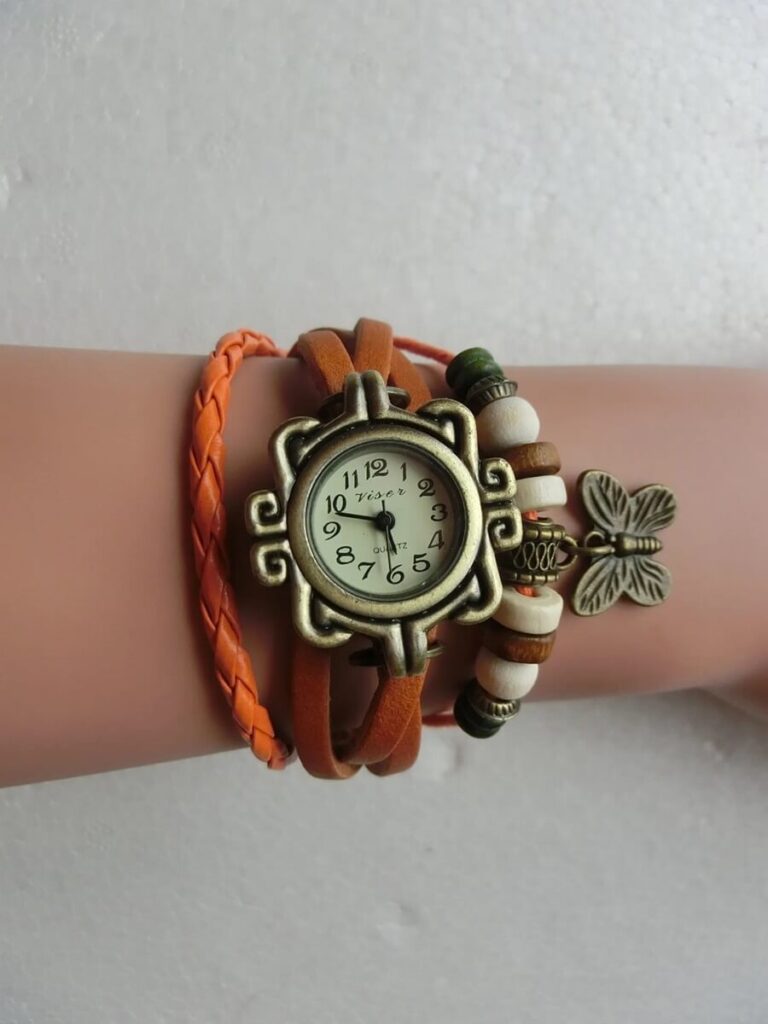In a world where time flies by lightning speed, we often find ourselves constantly looking for ways to make the most of every precious second. But what if I told you that there’s a simple tip that can keep you punctual and unlock an array of unexpected benefits? Yes, my friends, I’m talking about wearing a watch on your left hand!
This timeless accessory has more tricks up its sleeve than meets the eye. Today, we unveil the remarkable advantages of strapping on this stylish timekeeper. So buckle up and discover the 6 benefits of wearing a watch on your left hand.
- Tradition and Cultural Norms
- Ease of Use
- Comfort and Range of Motion
- Reduced Wear and Tear
- Safety During Activities
- Social Etiquette
Tradition and Cultural Norms
Wearing a watch on your left hand has been a long-standing tradition in many cultures worldwide. It is considered a cultural norm with significant meaning and symbolism. In many Western cultures, the left arm is seen as the hand of tradition, responsibility, and authority. This dates back to ancient times when the left hand was used for tasks such as holding a shield or reins while riding a horse. As a result, wearing a watch on your left hand is seen as a sign of responsibility and power.
In some Asian cultures, the left hand is also considered to be more important than the right. But, in Chinese people, it represents yin energy, associated with femininity and intuition. But what about Japanese culture? It is believed that it can help you make better decisions. Some cultures also have specific rules for when it is appropriate to wear a watch on your left hand. For example, wearing a watch or any other piece of jewelry is considered disrespectful during prayer in Islamic culture.
Ease of Use
Placing a watch on your left wrist allows easy access and visibility. As most people are right-handed, it is natural to use their dominant hand to check the time. By having the watch on their non-dominant hand, they can easily glance at it without disrupting their daily movements or even needing to switch hands. This makes it convenient for those on the go or have busy schedules.
Additionally, watches offer an effortless way to keep track of time without relying on technology. With smartphones being so prevalent in our society, many individuals rely solely on them to check the time. However, taking out your phone can be seen as rude or distracting in certain social settings. Wearing a watch eliminates this problem as you can discreetly check the time without causing any disruptions.
Comfort and Range of Motion
Wearing a stylish watch on your non-dominant hand, typically the left hand for most individuals can significantly increase comfort levels. This is because the weight of the watch is evenly distributed across the wrist. Reducing any strain or discomfort from wearing it on the dominant hand. Having a watch on your left hand also leaves room for other accessories, such as bracelets or bangles, to be worn comfortably on your right hand without feeling weighed down.

Moreover, watches have come a long way in design and technology. Many brands now offer lightweight and slim designs that make them comfortable to wear for extended periods without causing irritation or pain to the wrist. The strap material also plays a crucial role in ensuring comfort while wearing a watch on the left and right hand. Leather straps are known for their softness and flexibility, making them an excellent choice for sensitive skin.
Another significant benefit is improved range of motion in daily activities. As mentioned earlier, today’s watches are designed to be thin and light, weighing between 20 and 70 grams, making it easy to move around when performing tasks such as typing or writing. The weight of the watch on your non-dominant hand does not hinder movement, allowing you to perform various activities with ease.
Reduced Wear and Tear
Wearing your watch on your left-hand makes you less likely to bump it against hard surfaces or accidentally drop it. The left hand is generally considered the non-dominant hand for most people. Making it less prone to sudden movements that could damage the watch. This is especially beneficial if you have an expensive or delicate timepiece that needs extra care and protection.
Furthermore, constantly taking off and putting back on a watch can cause unnecessary strain on the straps or bracelet links. You reduce repetitive motion that can weaken these components over time by consistently keeping it on one wrist.
Safety During Activities
When participating in various activities, it is important to prioritize safety at all times. This includes not only wearing protective gear or following proper techniques but also considering the placement of your watch.
For example, if you are playing tennis or using gym equipment, having a watch can easily get caught and cause injury. By wearing it on your non-dominant left hand, you minimize the chances of accidents occurring.
Moreover, it allows for better visibility and accessibility while engaging in physical activities. Studies show that around 90% of people around the world are right-handed, so their dominant hand is usually occupied with tasks such as holding a racket or lifting weights.
Additionally, with the growing popularity of smartwatches, and fitness trackers. Famous sports figures are using them to track their workouts and monitor their heart rate during exercise. Wearing these devices ensures accurate readings because they are closer to the heart than those worn on the right hand.
Social Etiquette
Wearing a watch is not about telling time; it’s also a fashion statement and can say a lot about your style and personality. But did you know that the wrist you wear your watch on can also impact your social etiquette?
Traditionally, men wear their watch on their left wrist and women on their right wrist. This goes back to when pocket watches were the norm and worn on the opposite side of your dominant hand for easy access. However, today’s modern society has no hard and fast rule about which wrist you should wear your watch on.
If you are attending a formal event or business meeting. It is still considered proper etiquette for male to wear their watch on their left hand. This is because it is more discreet and doesn’t draw attention away from shaking hands or other gestures.
For females, a watch on the right wrist is often seen as more feminine and elegant. It also allows for easier movement of the dominant hand without being hindered by a watch.
In casual settings, there is more flexibility in which wrist you wear your watch. It ultimately comes down to personal preference and what feels most comfortable.
Another important factor to consider when wearing a watch is the size and style of the timepiece itself. A bulky or flashy watch may not be appropriate for certain occasions. So choosing a watch that fits the occasion and reflects your personal style is important.
Recap
In conclusion, it is clear that wearing a watch on the left has many advantages. Above all, it makes checking the time easier and more convenient for most right-handed people. Additionally, it helps prevent damage or scratches to the watch face from daily activities. Finally, it can improve your coordination and balance. So next time you put on your favorite timepiece, consider wearing it on your left hand for these added benefits!

